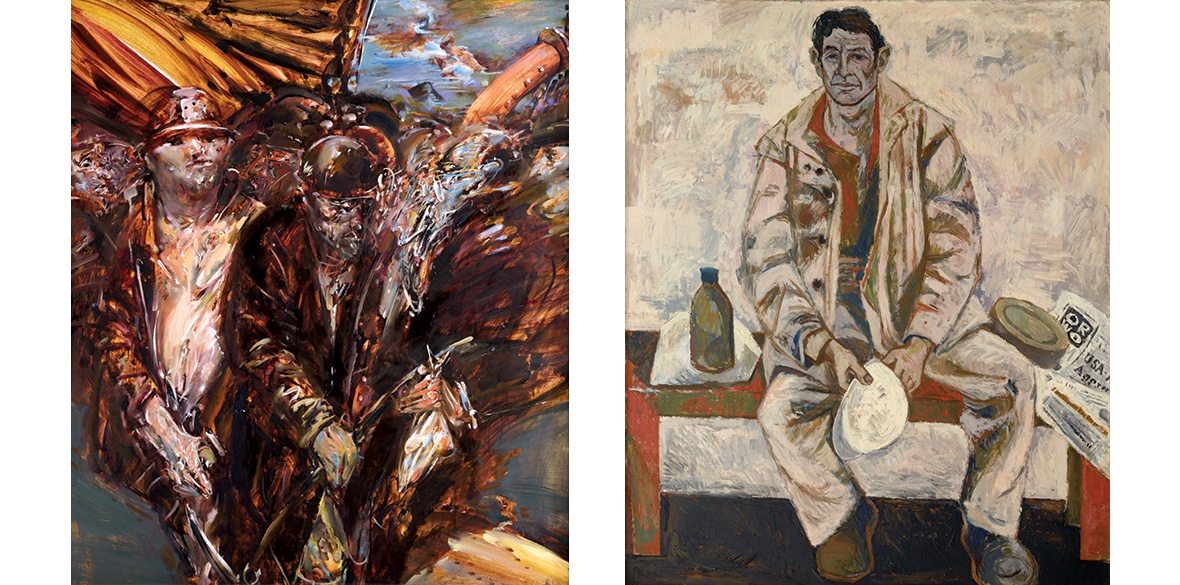This is the last article you can read this month
You can read more article this month
You can read more articles this month
Sorry your limit is up for this month
Reset on:
Please help support the Morning Star by subscribing here
THE Wismut mine (the Soviet-German Joint Stock Company Wismut) was set up in 1946 after the war to supply uranium for the Soviet nuclear programme. It became the world’s fourth largest producer of uranium between 1946 and 1990. It was located in Saxony, in the Soviet occupation zone of Germany which, from 1949 onwards, became the territory of the German Democratic Republic (GDR).
As one can imagine, working in this mine was dirty, dangerous and demanded heroic efforts from those who were prepared to work there, although the work was well remunerated. During GDR times, the mine became symbolic for selfless working-class endeavour.
With the launch of the ruling Socialist Unity Party’s new cultural programme The Bitterfeld Path in 1959, artists and writers were encouraged to spend time in factories and workplaces in order to establish a genuine rapport between themselves and workers and to help overcome the gulf between the world of manual labour and that of artistic creation.
Artists, it was hoped, would learn about working life first hand and workers would become involved in or appreciative of the processes of artistic creation.
As a result of this policy, a new era of cultural activity was ushered in: there were many books, poems, articles and works of art that reflected working-class life in a new and direct way.
This period saw the flowering of socialist realist works of art on an unprecedented scale. The Wismut mine became a particularly symbolic place of pilgrimage for many artists.
Those who took up residences here or in other factories and workplaces were provided with grants or paid minimum wages by the companies and their works were often purchased by them – the Wismut company became the owner of the biggest collection of such works.
Socialist realist art has been laughed at and ridiculed by many in the West as stereotypical, propagandistic and primitive. Such attitudes were, sadly, reinforced by those party bureaucrats in the socialist countries who promoted a very narrow-minded conception of what socialist realist art should be.
Despite such attitudes and the many second-rate works that masqueraded as “socialist realism,” there was also an enormous body of work produced in those countries that were of high artistic quality and reflected ordinary people’s working lives in a way not seen in the West.
The art collection of Wismut GmbH is a unique example of that movement. It is the most extensive art collection held by any GDR company, with 4,209 works by 450 artists, including more than 280 paintings.
The works are predominantly depictions of those who worked in the mine but include landscapes and portraits. As the mine was based in Saxony, most of the artists who worked there came from the Saxon painting traditions and art academies based in Leipzig and Dresden, the two biggest cities in the region, and include some of the leading artists of the GDR.
This exhibition of around 120 woks — jointly organised by the Gera Art Collection and the Dresden Institute for Cultural Studies — engendered a lively public debate on its history, status and about the future of the collection.
It is one of the best and most representative collections of socialist realist art works produced in the GDR and the often powerful imagery and subject matter underlines the fact that socialist realist art cannot be so readily dismissed as irrelevant or as an aberration in an art historical context.
A catalogue of the exhibition — Sunseekers! The Art Collection of the Wismut — an Inventory — edited by Paul Kaiser, Holger Peter Saupe is available in book form from www.kulturstudien-dresden.de











